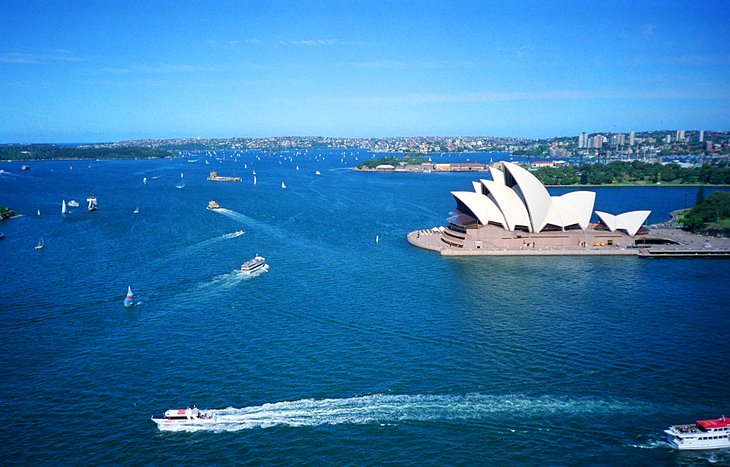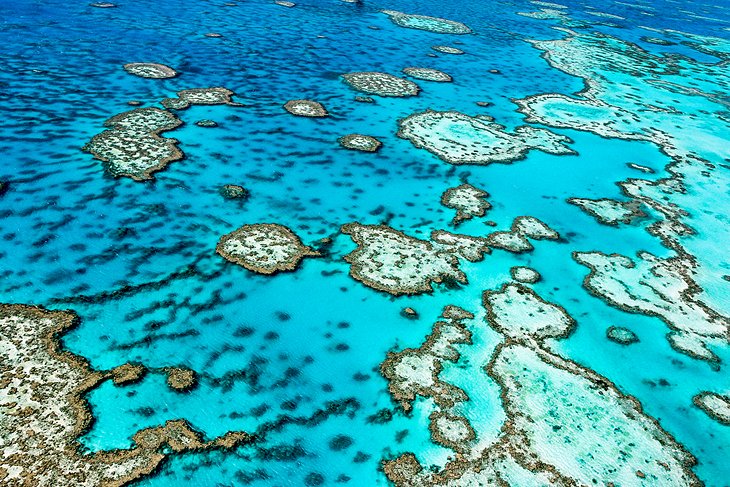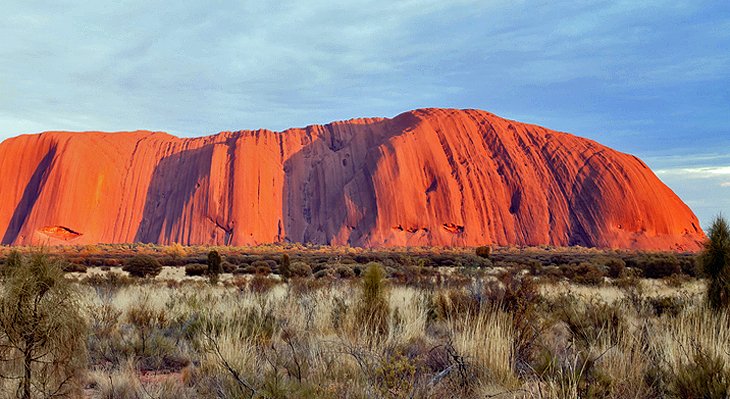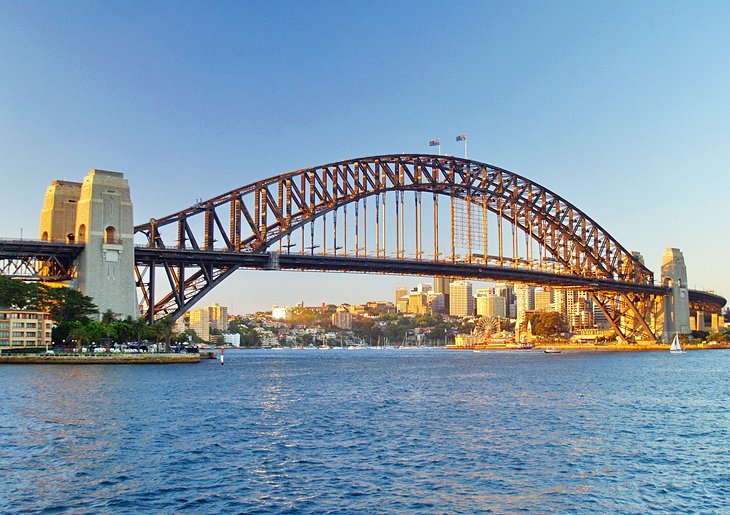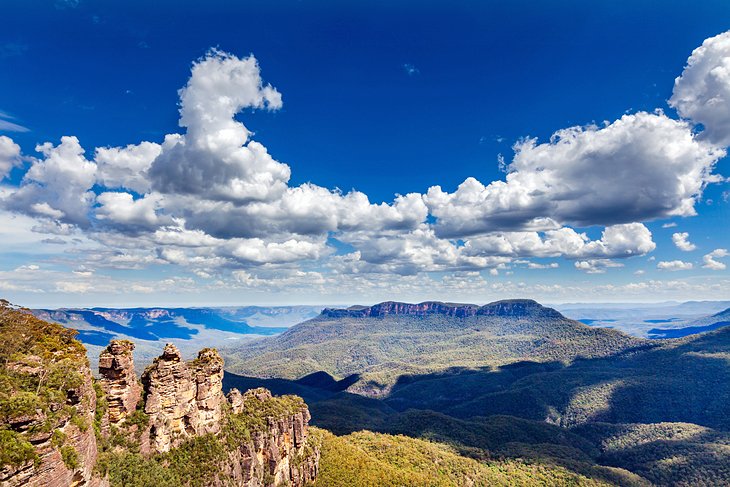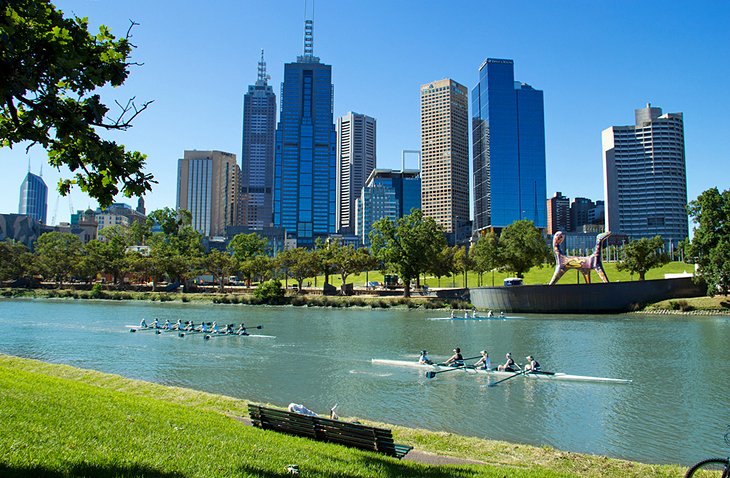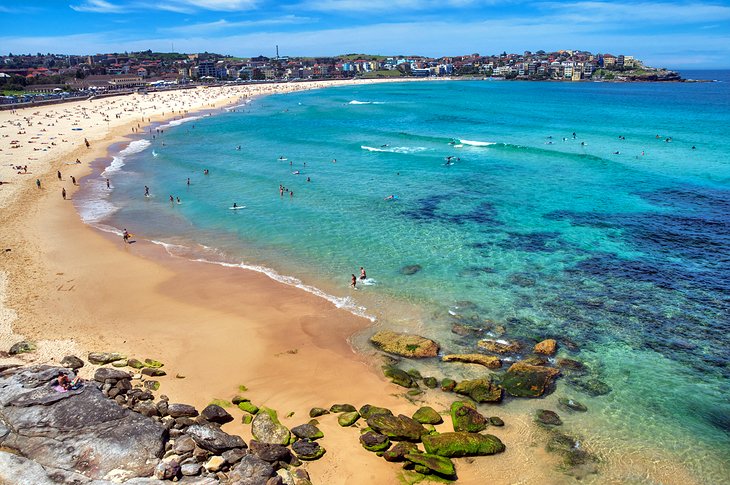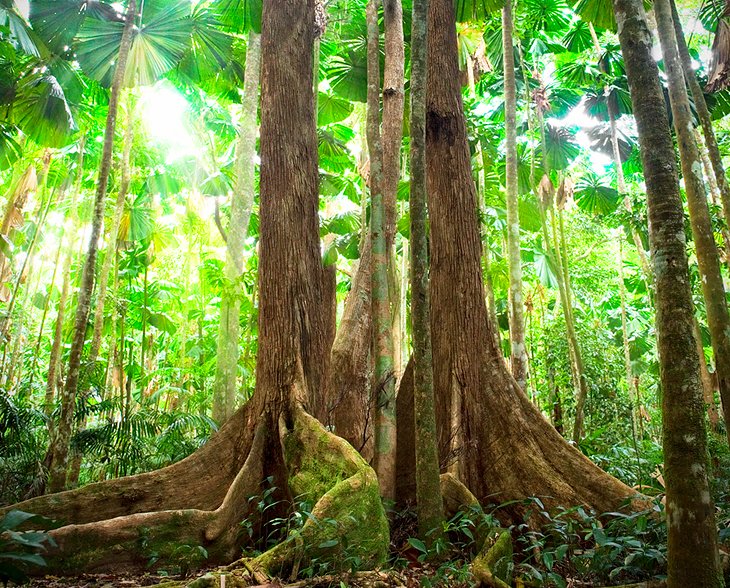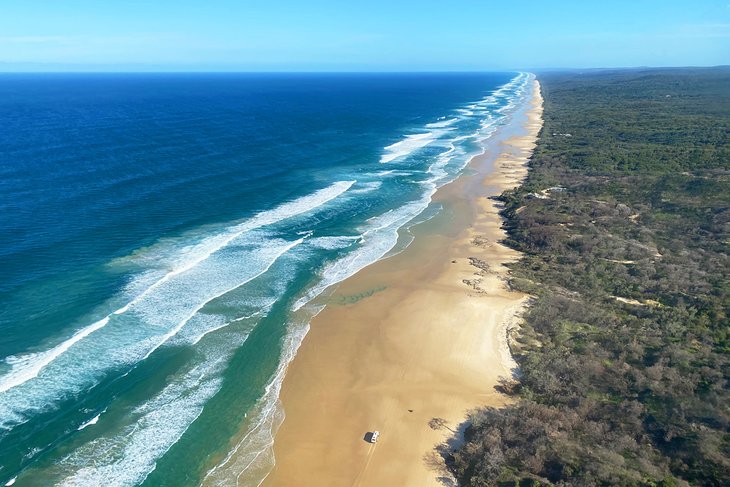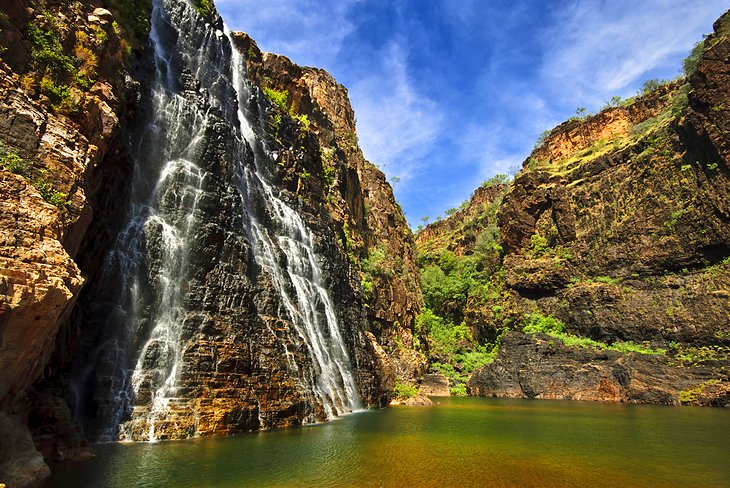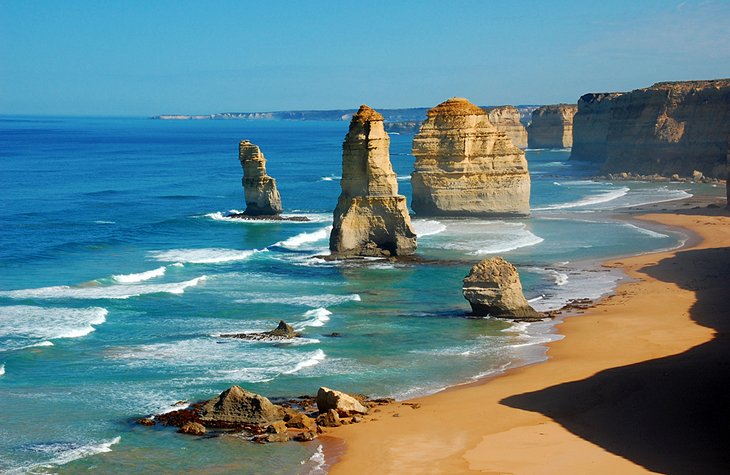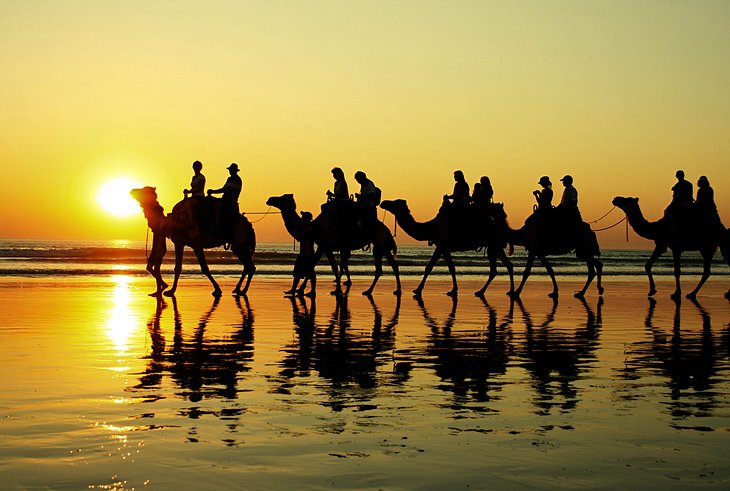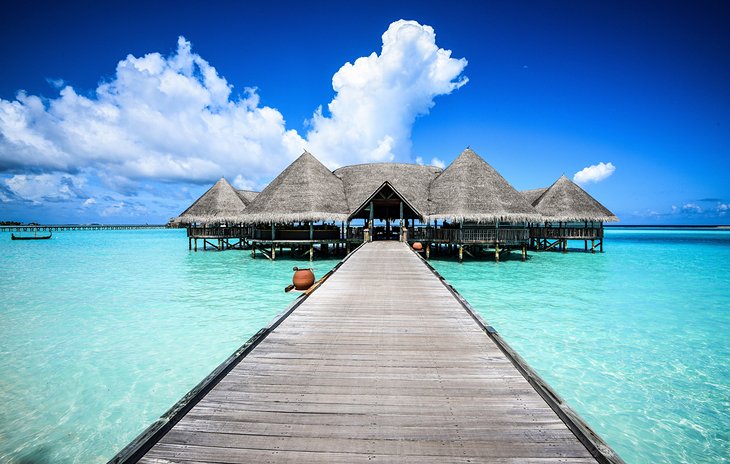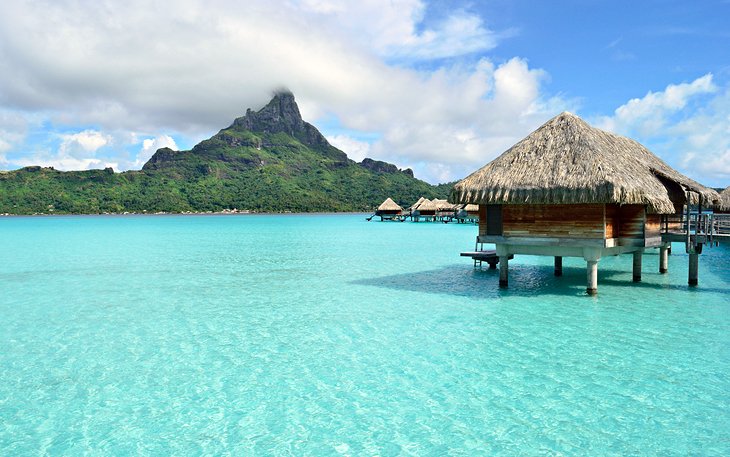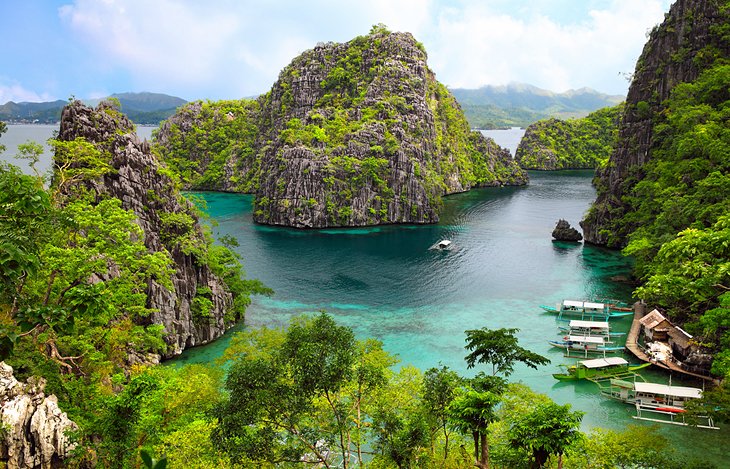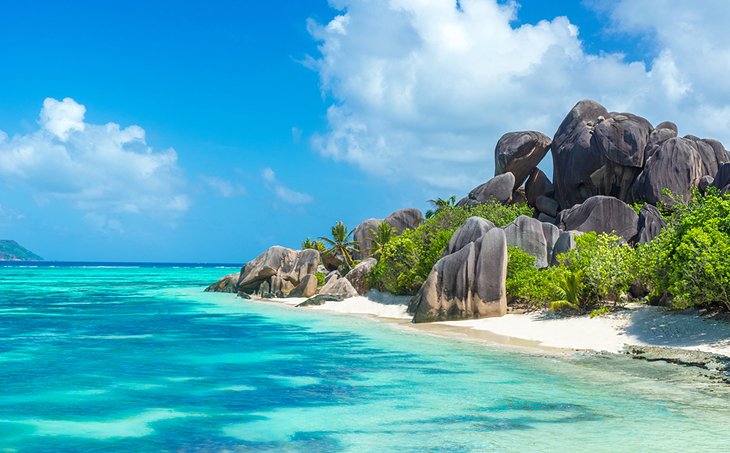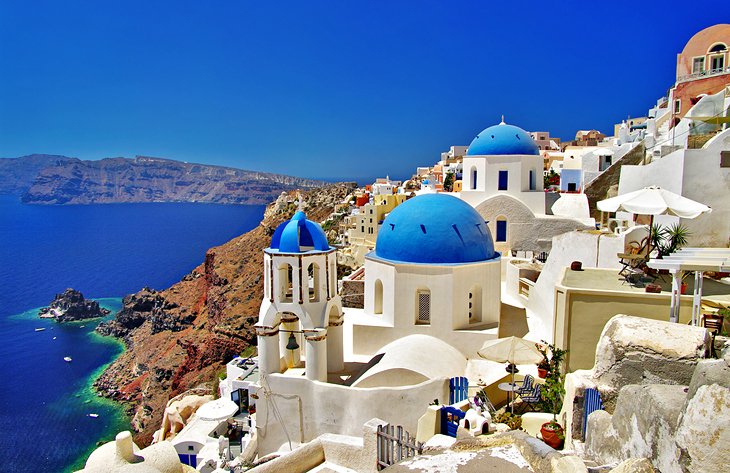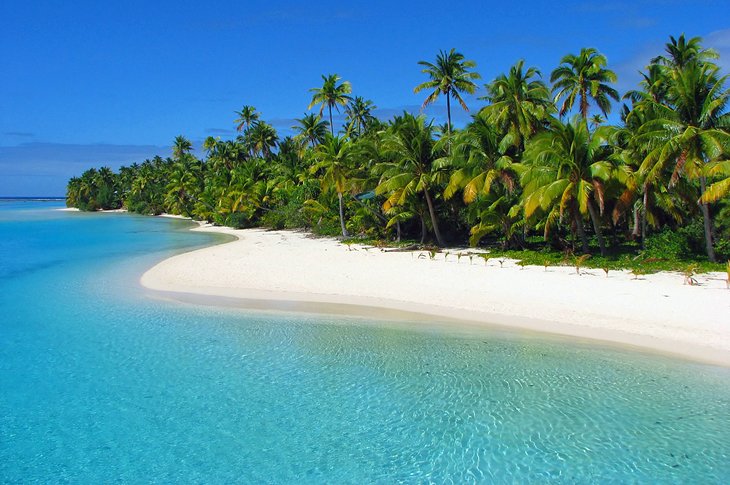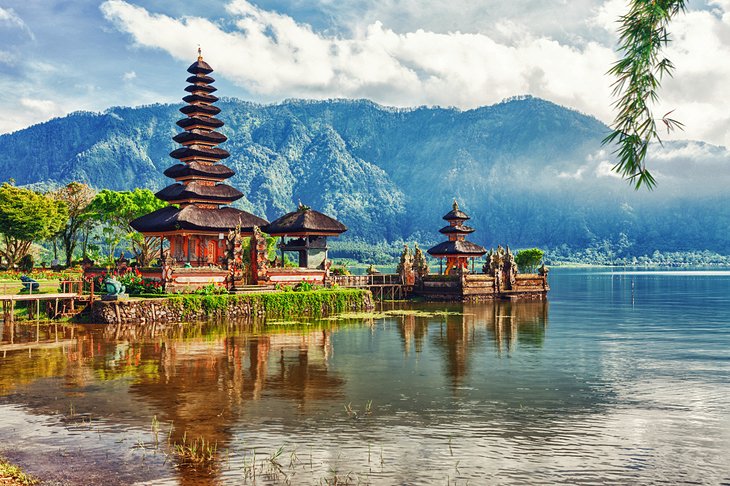Nature crafted New Zealand with the surreal beauty of a movie set. Few destinations boast so many staggering natural wonders packed into such a small area. Snow-capped peaks, sparkling coves, coastal glaciers, rainforests, fjords, and fish-filled rivers are some of the treasures travelers can explore. In Rotorua, one of the world's largest geothermal areas, visitors can witness the powerful forces that birthed these landscapes in the bubbling mud ponds and hissing springs.
Thanks to its dramatic topography, New Zealand is a hotspot for adrenaline-fueled sports. White water rafting, luging, jet boating, heli-skiing, skydiving, and mountain biking round out the list of outdoor adventures and the country is home to one of the highest bungee jumps in the world. Strategically, New Zealand is a breeze to travel around. Self-drive vacations are popular, and the country's diverse accommodations range from quaint bed and breakfast inns and eco-lodges to some of the world's most luxurious hotels.
Thanks to its dramatic topography, New Zealand is a hotspot for adrenaline-fueled sports. White water rafting, luging, jet boating, heli-skiing, skydiving, and mountain biking round out the list of outdoor adventures and the country is home to one of the highest bungee jumps in the world. Strategically, New Zealand is a breeze to travel around. Self-drive vacations are popular, and the country's diverse accommodations range from quaint bed and breakfast inns and eco-lodges to some of the world's most luxurious hotels.
1 Fiordland National Park and Milford Sound, South Island
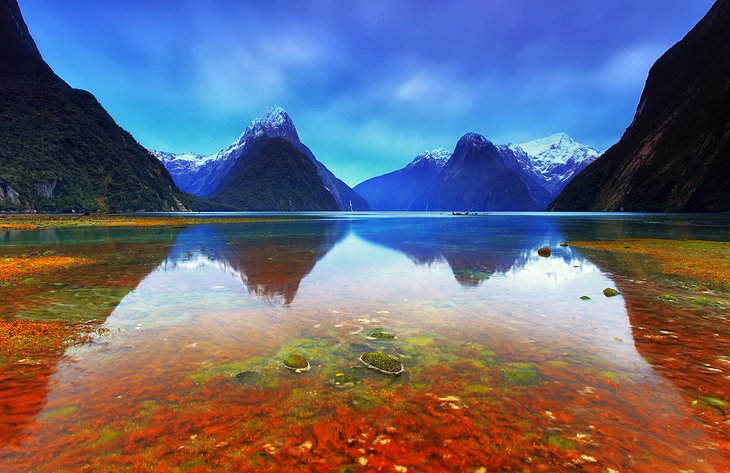
Fiordland National Park and Milford Sound, South Island
A World Heritage Site, Fiordland National Park protects some of the most spectacular scenery in the country. Glaciers sculpted this dramatic landscape carving the famous fjords of Milford, Dusky, and Doubtful Sounds. Visitors here can explore gushing cascades, offshore islands, virgin rainforests, vast lakes, and craggy mountain peaks. Not surprisingly, the park is a haven for hikers with some of the country's best walks, including the famous Milford Track. Sea kayaking is a popular way to explore the fjords, and visitors can also enjoy a scenic flight over the park for a bird's eye view of its staggering beauty
2 Bay of Islands, North Island
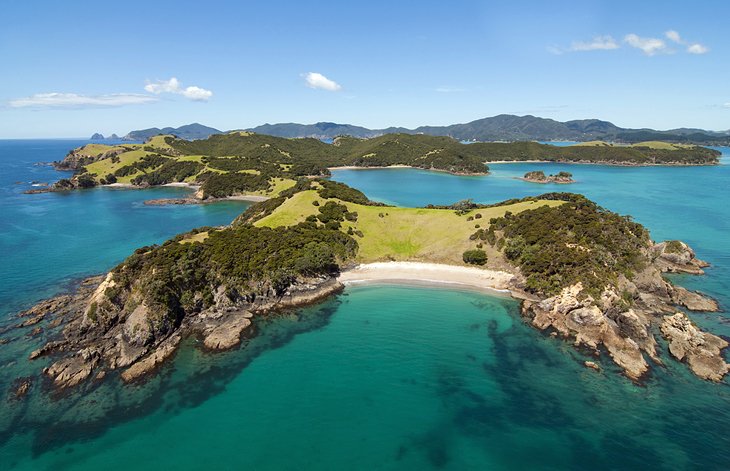
Bay of Islands, North Island
A three-hour drive north of Auckland, the beautiful Bay of Islands is one of the most popular vacation destinations in the country. More than 144 islands dot the glittering bay making it a haven for sailing and yachting. Penguins, dolphins, whales, and marlin live in these fertile waters, and the region is a popular sport fishing spot. Visitors can sea kayak along the coast, hike the many island trails, bask in secluded coves, tour Cape Brett and the famous rock formation called Hole in the Rock, and explore sub-tropical forests where Kauri trees grow. The quaint towns in the area such as Russell, Opua, Paihia, and Kerikeri are great bases for exploring this scenic bay.
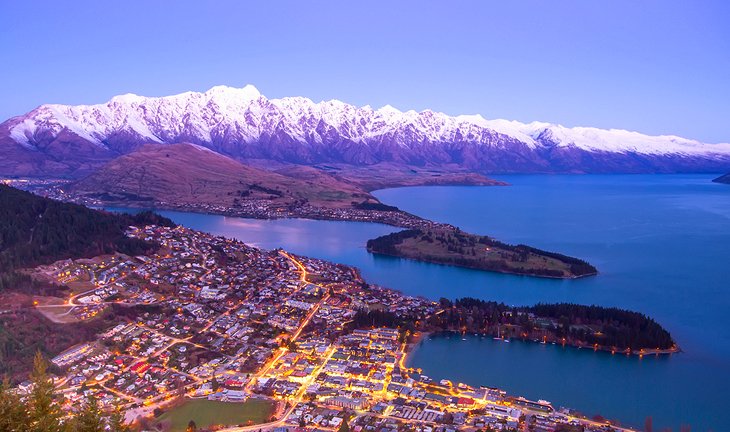
Queenstown, South Island
4 Lake Taupo and Tongariro National Park, North Island
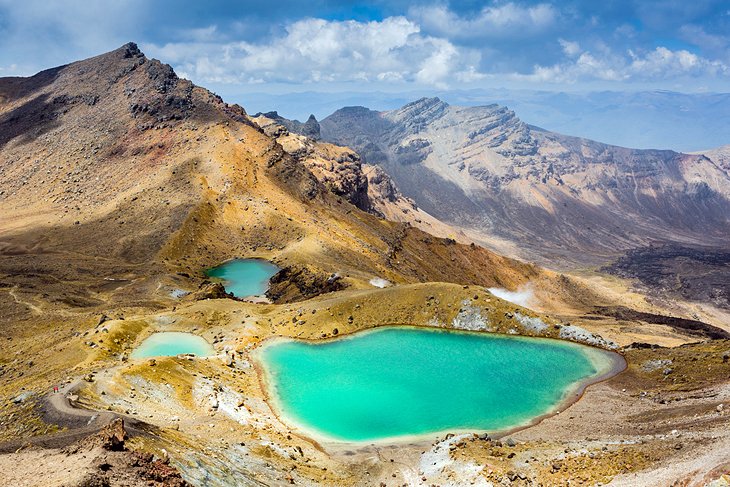
Lake Taupo and Tongariro National Park, North Island
In the center of the North Island, a few kilometers from glittering Lake Taupo, New Zealand's largest lake, Tongariro National Park is a dual World Heritage Site due to its spectacular volcanic features and its importance to the Maori culture. In 1887, Maori chief Te Heuheu Tukino IV gifted the volcanic peaks of Tongariro, Ngauruhoe, and part of Ruapehu to the people of New Zealand in order to preserve this sacred land. One of the oldest national parks in the world, Tongariro is a land of dramatic beauty with towering volcanoes, turquoise lakes, arid plateaus, alpine meadows, and hot springs. A highlight of the park is the Tongariro Alpine Crossing, one of the most popular day walks in the country.
5 Rotorua, North Island
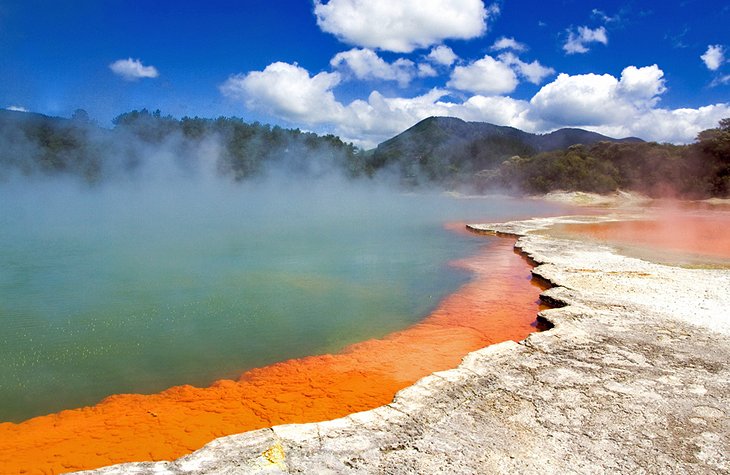
Rotorua, North Island
On the tumultuous Pacific Ring of Fire, Rotorua is one of the most active geothermal regions in the world. This is a land where the earth speaks. Boiling mud pools, hissing geysers, volcanic craters, and steaming thermal springs betray the forces that birthed much of New Zealand's dramatic topography. Visitors can take a walking tour of these geothermal wonders, soak in steaming mineral springs, and learn about the region's rich Maori history and culture. Adventure seekers will also find plenty of things to do. Sky-diving, luging, and mountain biking are some of the activities on offer. Trout fishing is also popular, and Rotorua is the gateway to the ski fields of Mt. Ruapehu. Nearby Wai-O-Tapu is also a popular tourist attraction with colorful hot springs and the famous Champagne Pool and Lady Knox Geyser.
6 Fox and Franz Josef Glaciers, South Island
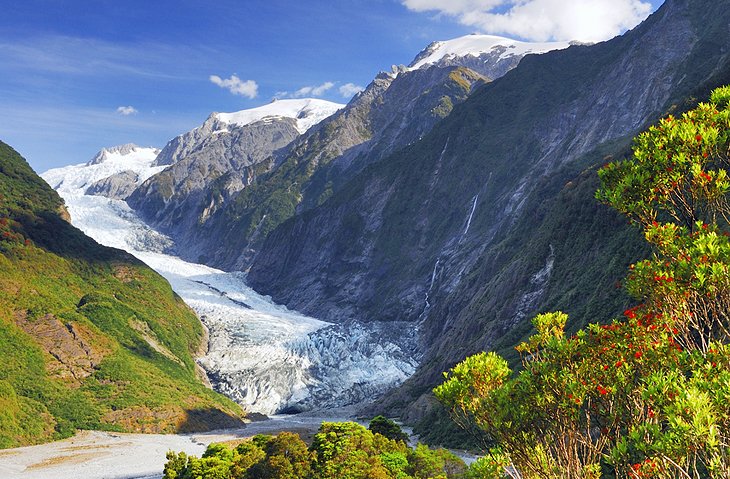
Fox and Franz Josef Glaciers, South Island
7 Abel Tasman National Park and the Abel Tasman Coast Track, South Island
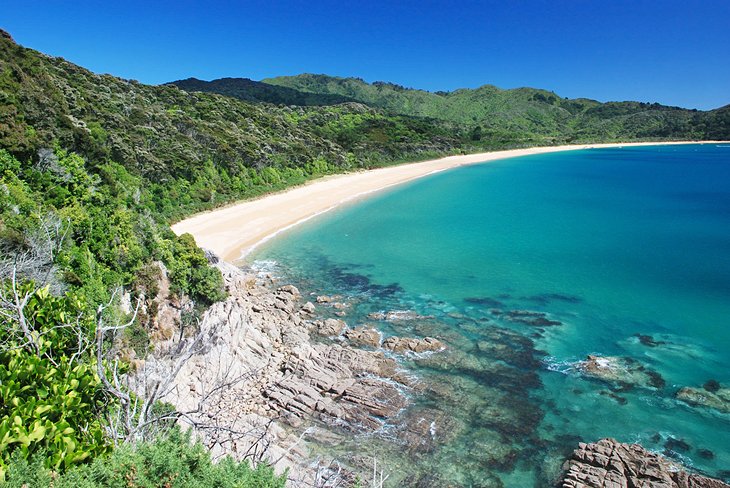
Abel Tasman National Park and the Abel Tasman Coast Track, South Island
The Abel Tasman Coast Track in Abel Tasman National Park is one of New Zealand's Great Walks. Winding along sparkling Tasman Bay, from Marahau to Separation Point, this scenic 51-kilometer hike lies in one of the sunniest regions of the South Island. Along the way, hikers can snorkel in secluded coves; spot fur seals, dolphins, penguins, and a diverse range of birds; hike through cool forests; and enjoy panoramic views from the rugged coastal cliffs. Photographers will also enjoy the many weathered rock formations, especially Split Apple Rock, a giant granite boulder sliced in two. The hike takes around three days, and accommodation ranges from campgrounds, to rustic huts, and plush private lodges. Sea kayaks are also a popular way to explore this beautiful coast.
8 Aoraki / Mount Cook National Park, South Island
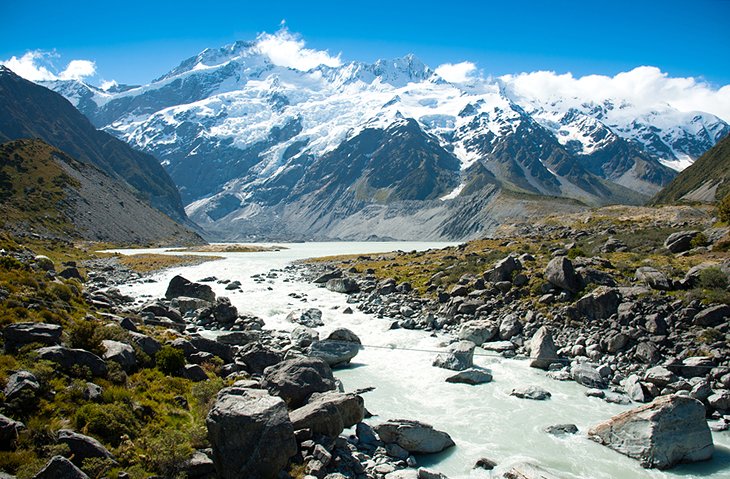
Aoraki / Mount Cook National Park, South Island
In the heart of the Southern Alps, New Zealand's highest peaks rise above the alpine landscapes of Aoraki National Park, also called Mount Cook National Park. More than 40 per cent of the park is covered in glaciers, and the country's tallest mountain Aoraki/Mount Cook and longest glacier, the Tasman Glacier, lie within its borders making this a top destination for mountaineering. Sir Edmund Hillary trained here for his legendary Mount Everest ascent. Nature lovers will appreciate the diversity of flora and fauna with more than 300 species of alpine plants and 40 species of birds. Mount Cook Village is a great base for exploring the park and organizing activities such as scenic flights, ski touring, heli-skiing, hunting, hiking, and stargazing trips.
9 Napier, Hawke's Bay, North Island
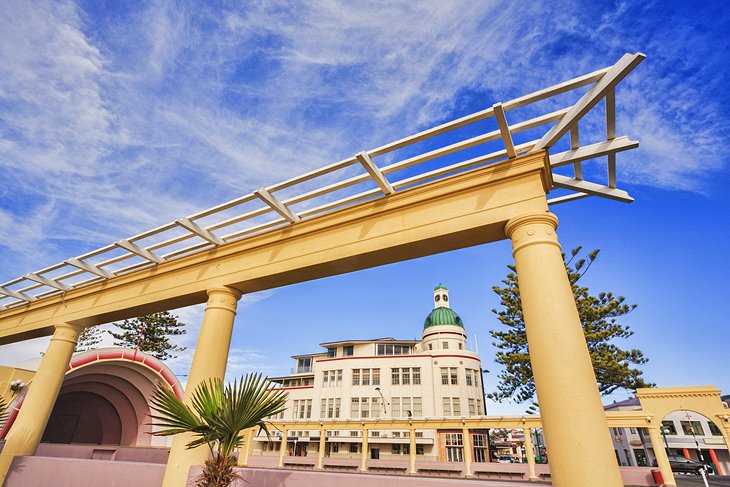
Napier, Hawke's Bay, North Island
In the sunny region of Hawke's Bay, Napier is famous for its gourmet food and Art Deco architecture. After a powerful earthquake destroyed the town in 1931, it was rebuilt in the Spanish Mission style and Art Deco design for which Miami Beach is also famous. Today, visitors can take self-guided tours to view these buildings, some of which are embellished with Maori motifs. Along the Marine Parade seafront promenade lies the town's famous statue from Maori mythology called Pania of the Reef. Napier is also a haven for foodies. Gourmet restaurants here specialize in using fresh produce from the region, and the town plays host to popular farmers' markets. Nearby attractions include hiking trails and the gannet colony at Cape Kidnappers.
10 Auckland, North Island
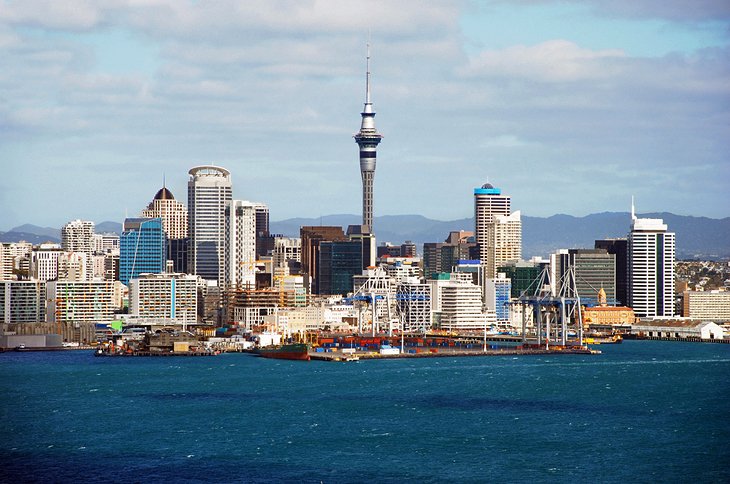
Auckland, North Island
Blessed with two sparkling harbors, Auckland, the "City of Sails," is New Zealand's largest city and the most populous Polynesian city in the world. Blond- and black-sand beaches, rainforest hiking trails, picturesque coves, islands, and volcanoes surround the city making it a perfect base for day trips and wilderness adventures. To appreciate Auckland's stunning location, visitors can zoom up the 328-meter Sky Tower for spectacular views across the city and hinterland. Auckland is also home to top-notch dining, a vibrant arts scene, and a revamped waterfront district packed with boutiques and restaurant.
11 Coromandel Peninsula, North Island
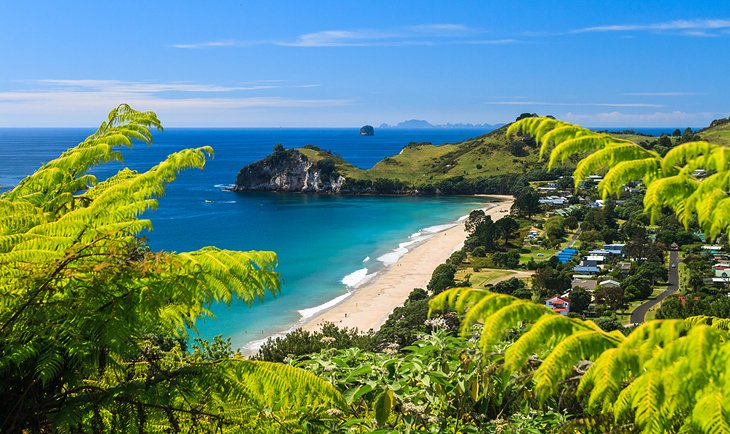
Coromandel Peninsula, North Island
Just across the Hauraki Gulf from Auckland, the rugged Coromandel Peninsula seems a world away from the city's hustle and bustle. Craggy mountains cloaked in native forest form a spine along the peninsula offering excellent opportunities for hiking and birding. Visitors can also relax on the golden beaches, sea kayak around the offshore islands, sky dive, and visit the many galleries and art studios. At Hot Water Beach, a dip in the bubbling hot pools is a great way to end a busy day of sightseeing.
12 Kaikoura, South Island
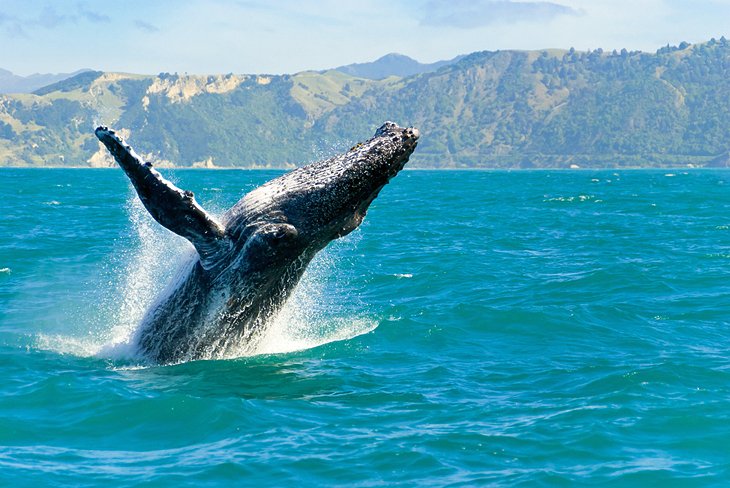
Kaikoura, South Island
.
Link:http://www.planetware.com/tourist-attractions/new-zealand-nz.htm










